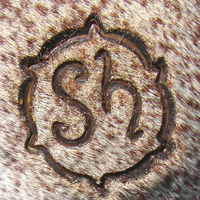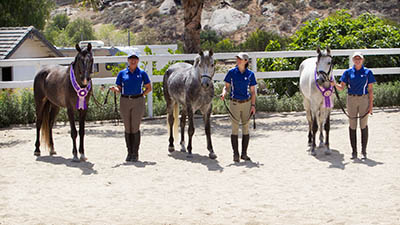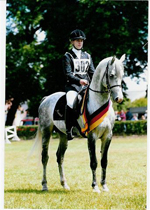What is a Shagya-Arabian

Today’s Shagya, also called a Shagya-Arabian because of the heavy influence of Arabians on the breed, is a rare, but versatile sport horse equally at home at dressage, eventing, show jumping, hunting, endurance riding, harness, or pleasure riding.
The breed was started in 1789 when the Hungarian military set out to develop a new breed of horse that combined the very best of Bedouin Arabians: elegance, endurance, hardiness, athleticism, temperament, and devotion to their rider, but with larger size, jumping ability, and riding ease to master the rigors and versatility of a cavalry horse. The intent of the program was to develop a superior cavalry horse that was equally at home under saddle and in harness and that could be used to improve other breeds as well.
The breeding program started at the Imperial Stud at Babolna, Hungary. Desertbred Arabian stallions of the correct size and type were bred to carefully selected native southeastern European mares which in turn were largely descended from Arabian stock. Careful records were kept from the very outset, not just of the pedigree and size and performance of the individual horses, but of the breeding quality and performance of their offspring.
Right from the outset, performance testing was regarded as essential. Both mares and stallions were put through rigorous tests, including dressage, a 10-day 480 mile ride across plains, forests and mountains, 2-mile sprints, and long distance driving. Careful records were kept of the horse’s jumping, speed, condition, and disposition. New stallions were rigorously progeny tested, including breeding to 30 mares a year for 3 years, the mares differing in quality. Ten were of low quality, ten of average quality, and ten high quality. The offspring were carefully reviewed by committee, and if any did not meet the standards, the entire group was sold off. Any mare or stallion that did not meeting the high standards were culled and sold at auction, ensuring that only high performance bloodlines were used in the breeding program.
Through time, elite desertbred Arabians were carefully added to the bloodlines, and English Thoroughbreds and Lippizaners were occasionally included in the breeding mix to help improve size, movement, and riding qualities.
It was only through a controlled breeding and testing program at military studs such as Babolna as well as later at other State studs in what was the Austro-Hungarian Empire at Radautz (now Romania), Topolcianky (now Slovakia), Mangalia (now Romania), Mezohegyes (Hungary), Kabijuk (now Bulgaria), and Piber, (Austria), and rigorous selection and culling, that the desired type and character of the Shagya breed were developed and individuals would breed true to type. So successful was the breeding program that the Hapsburg’s Imperial Guard in Vienna and the Royal Guard in Budapest were mounted on Shagyas, and Shagyas were the cavalry officer’s horse of choice.
The breed’s name comes from a magnificent Bedouin stallion named Shagya, born in 1830, bred (from Kehilan and Slglavy strains) and raised by the Bani Saher tribe in Syria and obtained by Hapsburg monarchy in 1836 at age 6 to stand at stud in Babolna. This magnificent stallion was renowned in his day not only for his perfect size, type, and movement, but also for his ability as a sire to pass on these qualities to his offspring. Today, virtually every Shagya breeding line has his blood somewhere in it.

The characteristics of the Shagya are well established, and details of the desired color, conformation, gait and movement, jumping and rideability, temperament, and health are detailed in Breeding and Registration Goals. The Shagya should have the appearance of a beautiful, elegant, and harmonious riding horse with correctness of gaits and movements, who enjoys jumping and has good jumping ability, has pleasant rhythm and rideability, is trusting, good natured, and willing to learn, and has robust health, longevity, and fertility with stamina and frugality.
World War I was devastating for the breed, and the stud at Radautz was dispersed at the end of hostilities. World War II was even worse, yet the flagship stud at Bablona as well as state studs at Topolcianky (now Slovakia), Radowce and Slatina (now Romania), and Kabijuk (now Bulgaria) have managed to recover.
Today, Shagya breeding has expanded to include private owners throughout Europe (Germany, Austria, Hungary, Denmark, Switzerland, Slovakia, the Czech Republic, France, Norway, Sweden), the United States, and Venezuela. The International Shagya Gesellschaft e.v. (registry) has been established to preserve the goals of Shagya breeding, preserve Shagya bloodlines, and promote performance testing to preserve the essential qualities that make the Shagya the outstanding all-around horse that it is.
Although there is no longer a military need for Shagyas, all the noble qualities the breed possesses, elegance, endurance, temperament, devotion to their rider, rideability, hardiness, athleticism, size, and jumping ability make it an ideal horse for dressage, eventing, show jumping, hunting, endurance riding, harness, or pleasure riding.


